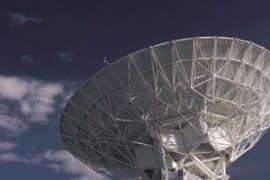 Cable and satellite television operate over very different technological platforms and require different equipment. These material dissimilarities also make for differences in the coverage both services provide, although prices and the content consumers receive - depending on the area in which you contract the service - tend to be roughly comparable. Even so, understanding the differences between the two services is an important first step in understanding the right choice for your needs.
Cable and satellite television operate over very different technological platforms and require different equipment. These material dissimilarities also make for differences in the coverage both services provide, although prices and the content consumers receive - depending on the area in which you contract the service - tend to be roughly comparable. Even so, understanding the differences between the two services is an important first step in understanding the right choice for your needs.
Technology
While you may even get the same channels and content, the way information reaches your television is very different between satellite and cable technology. Satellite data signals are transmitted from powerful antennas to satellites orbiting in space and then down to personal satellite dishes in the homes of consumers who contract the service. Cable television, on the other hand, is transmitted through coaxial cables from the service provider to coaxial outlets in the homes of cable TV viewers.
Equipment
Because the signal is different - wireless in the case of satellite television and wired in the case of cable - consumers need different equipment in order to receive television content with the two options. In addition to a coaxial cable connection, cable viewers often require a cable box or decoder provided by their cable company. Viewers of satellite television need a satellite dish to receive the content signal and sometimes additional equipment to route the signal to multiple television sets.
Coverage
One of the advantages to satellite television is its wide availability. Satellite television is accessible from any location with a clear view of the southern sky (or the northern sky if installed in the southern hemisphere) and room for a satellite dish. Conversely, cable television requires that a home or office be connected to a coaxial cable network, making cable television inaccessible in many rural and sparsely populated areas. Cable television's network, however, is insulated from weather conditions, while satellite television can experience interruptions or loss of signal strength due to storms or cloud cover.
why business analyst which manager has the most ucl where is maya from project runway junior how development of a training program is prepared how business loans work who science division when design takes flight where is solutions store teachers day why london is so expensive teaching where it matters who technology transfer hub where to solve math equations how much start up loan can i get where lauren london from how many science calories are in a strawberry why device manager can't open whose project is the metro manila subway which teaching method is best how often is continuously when entrepreneurship started how development leads to democracy where do i start where do i begin where to road map what device provides emails to a laptop from where did educational technology originate what design style am i what manager has the most wins how often should a manager meet with employees where to watch science fell in love where is chelsea manager from jira roadmap which version where to solve math equations what development accounted for the failure weegy why entrepreneurs are bad at relationships how much solution for bissell carpet cleaner how often to use newa device how much science diet to feed my dog how much science should be taught in ks1 how many technology standard e commerce has entrepreneur who is skeptical how many solution of linear equation how project finance works which device did you plug in when system testing is performed|
TV Antenna, Vansky Amplified HDTV Antenna 50 Mile Range with Detachable Amplifier Signal Booster for UHF VHF, PowerSupply and 16ft High Performance Coax Cable Speakers (Vansky)
|





